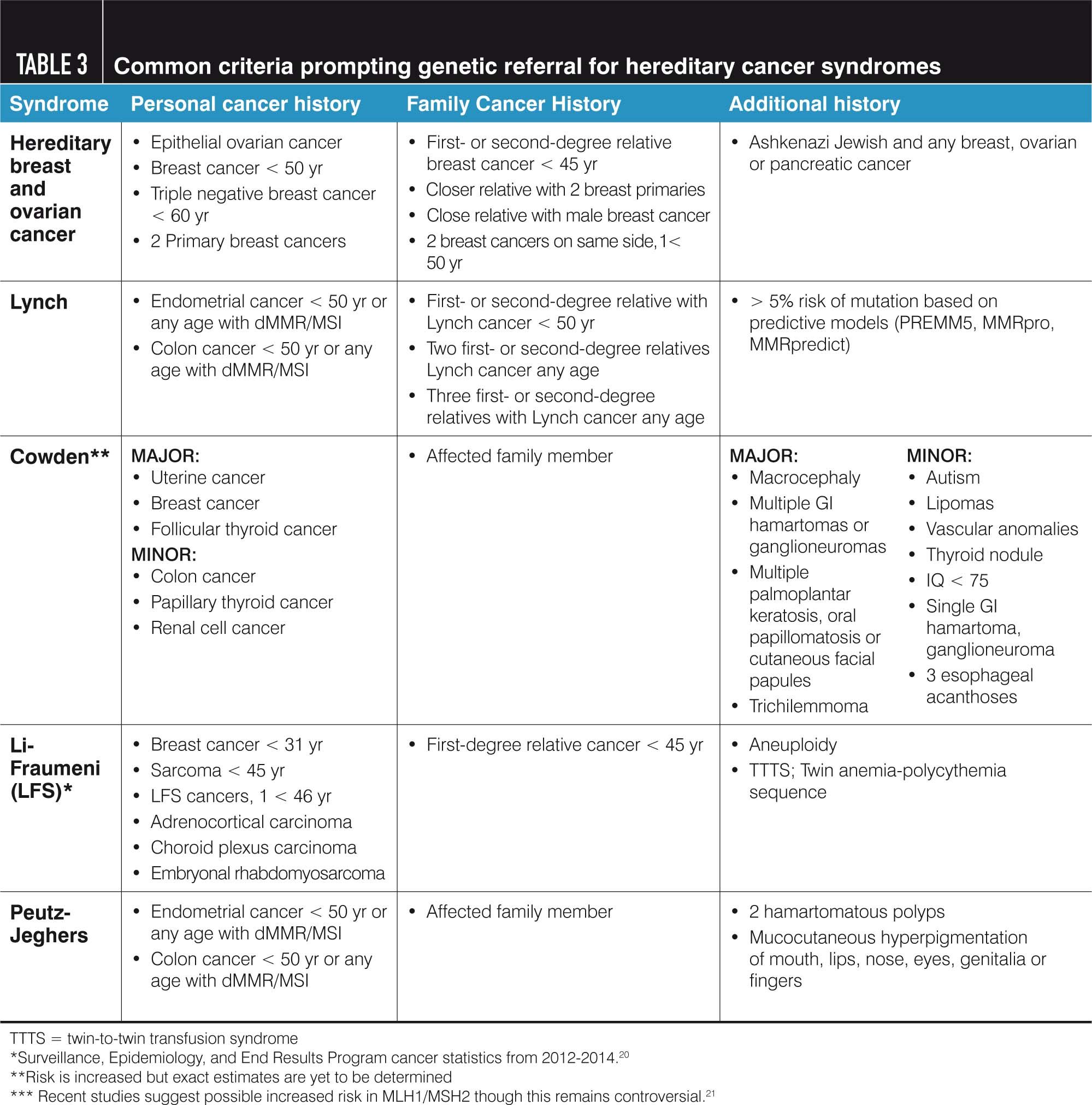Common criteria prompting genetic referral for hereditary cancer syndromes
There are several features in a woman’s personal or family history that should raise suspicion for potential involvement of an underlying genetic mutation and prompt genetic counseling/testing.

There are several features in a woman’s personal or family history that should raise suspicion for potential involvement of an underlying genetic mutation and prompt genetic counseling/testing. Most cancer syndromes will affect multiple generations, and diagnoses will occur at an earlier age than in sporadic malignancies. Male and triple-negative breast cancers (negative for estrogen, progesterone receptors and HER2/neu amplification) are also hallmarks of hereditary cancers, as is having a relative affected by 2 primary malignancies.1 In addition, any woman who has a close relative with a known cancer-susceptibility gene mutation should be referred for testing.2
When possible, genetic testing in a family should start with a cancer-affected individual. The affected person is the most likely in the family to carry a mutation and from whom a negative result is most informative-meaning, that if full genetic testing is negative, there is no identifiable mutation as the cause of the cancer and thus no benefit to testing cancer-unaffected individuals within that same familial lineage. But if a deleterious mutation is found in the person with cancer, directed genetic testing can then be initiated in other family members to determine if they carry the gene (true positives who need further tailored screening and risk reduction measures) or they do not (true negatives who can likely go back to population cancer screening). If the cancer-affected relative is not available, the closest relation to the affected family member is the next best option.
References:
- Ring KL, Garcia C, Thomas MH, Modesitt SC. Current and future role of genetic screening in gynecology. Am J Obstet Gynecol. 2017 Nov;217(5):512-521.
- National Comprehensive Cancer Network Clinical Practice Guidelines in Oncology: Genetic/Familial High-Risk Assessment: Breast and Ovarian. Version 1.2018 Oct 2017. Available at: https://www.nccn.org/professionals/physician_gls/f_guidelines.asp#genetics_screening
